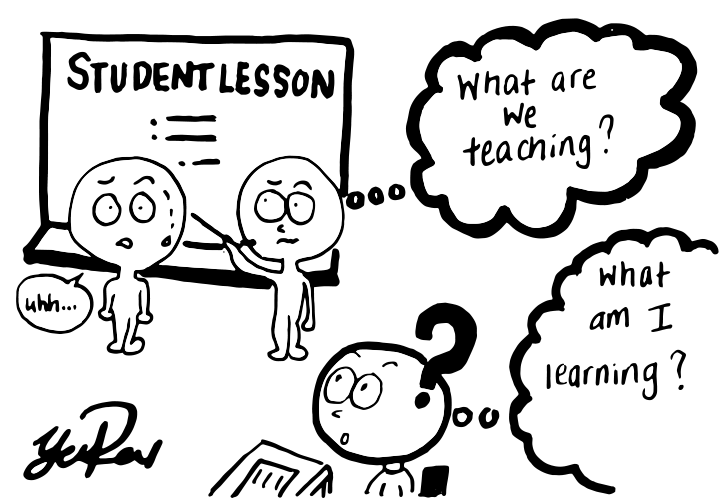
Students sit in class listening to lectures about the flaws in supply-side economics, photosynthesis or some other topic that they do not necessarily find interesting, and thus do not internalize. As a result, biology teachers have begun using student-taught lessons in order to help students understand the material. Students are assigned sections of the curriculum that they must present to the rest of their group. At the end of the unit, the teachers ensure that all students understand the concept with a review session. Though student-teaching projects enhance lessons taught by teachers, they are in no way a sufficient substitute for them, and thus should only be utilized as a supplement to lessons, not as a primary learning method.
This technique allows students to discuss the material, teach specific sections to each other and explore topics of interest. The benefits of this method are clear. Students are more likely to become interested in the subject material and are given the opportunity to delve deeper into specific areas of the curriculum. They may also discover new and interesting ways to view the material, and then present such discoveries to their peers. The fact that teachers ensure that all students understand the material is a safety mechanism that helps the process function.
However, these student-taught lessons must be used cautiously. The role that teachers play in the classroom is essential because they are the expert source of knowledge and information. If the main method of learning is based on other students, the efficiency of learning may be compromised. Only through the dedication of all students involved would this learning technique work as a whole. Some students may not be as thorough as others given their busy schedules, making it unlikely that all students will be prepared at all times. This makes it difficult to avoid a situation in which certain students put effort into their work in teaching others, but do not receive the same level of dedication from other students.
Therefore, student-taught lessons should only be implemented as a strategy that enhances teacher instruction. If teachers continue to develop their student-taught lessons, they must introduce a stringent, summative grading system in which students are graded for their level of preparedness. Such techniques would ensure that students make efforts to teach their fellow students. Though it is useful to implement different methods to help the retention of concepts, the teacher must still be responsible as the main conduit for learning within the classroom.
